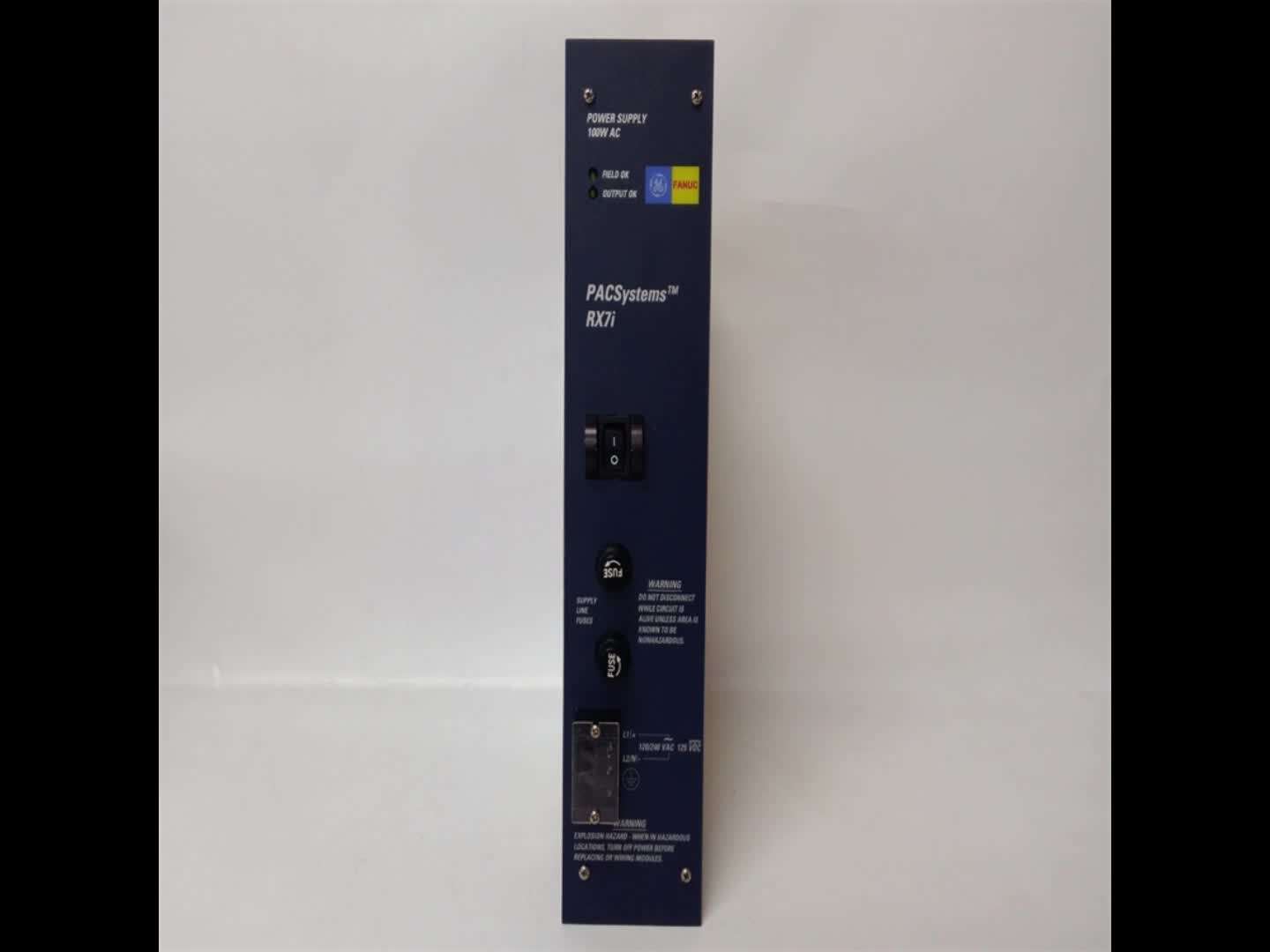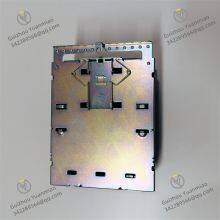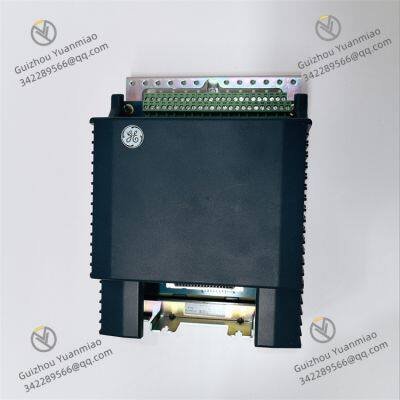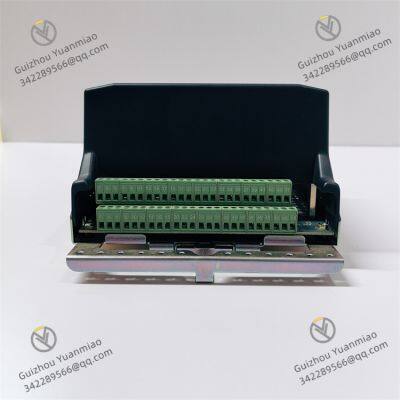Material
Other, Global universal model
Condition
Other, Global universal model
Task
Other, Global universal model
Mathematical Model
Other, Global universal model
Signal
Other, Global universal model
Customized
Non-Customized
Structure
Other, Global universal model
Operating temperature
-40℃ to 70℃
Humidity
5% - 95% (non - condensing)
Power Input
24V DC
I. Overview
GE IS410SRLYS2A is an important component in GE's industrial control product range, frequently used in industrial control systems, particularly those associated with GE's Mark VIe series. It serves as a key interface for processing specific types of input signals within the control framework. This terminal board is designed to be compact while boasting high functionality, meeting the requirements of industrial facilities where space efficiency and reliable signal processing are of utmost importance.

II. Technical Parameters
Input Channels: The IS410SRLYS2A is furnished with 24 discrete input channels. These channels are designed to accept 24V DC contact inputs, rendering it suitable for a broad array of industrial sensors and switches. For example, it can be connected to proximity sensors that detect the presence or absence of objects on manufacturing assembly lines, or limit switches that define the limits of mechanical movements in industrial machinery.
Voltage Compatibility: With a specified input voltage of 24V DC, it is well-matched with standard power supplies in numerous industrial settings. This voltage compatibility guarantees seamless integration with other components in the control system. The module is designed to handle input voltage fluctuations within a certain tolerance range, typically maintaining stable operation even when the input voltage deviates slightly from the nominal 24V DC. This is advantageous in industrial environments where power supply stability can sometimes be problematic.
Isolation: To protect the integrity of the control system from electrical interference, the input channels on the IS410SRLYS2A are isolated. The isolation voltage can reach a significant level, often in the range of several hundred volts. This high-voltage isolation effectively blocks electrical noise and transients from field devices, preventing them from impacting the operation of the sensitive components in the control system.
Response Time: The module is engineered to have a fast response time, usually in the millisecond range. This rapid response allows it to quickly detect changes in the status of connected input devices. For instance, in high-speed manufacturing processes where split-second decisions based on sensor inputs are necessary, the IS410SRLYS2A can promptly transmit the updated input status to the control system, ensuring timely and accurate control actions.
Operating Temperature Range: It is designed to operate stably across a wide temperature range, from -40°C to +70°C. This broad temperature tolerance makes it suitable for deployment in various industrial environments, such as cold storage facilities where temperatures can drop far below freezing, or in hot and humid industrial areas with high ambient temperatures.
Physical Dimensions: The IS410SRLYS2A features a compact form factor. Although specific dimensions may vary, it is typically sized to fit into standard industrial control cabinets without occupying excessive space. This compact design is a benefit in applications where space is limited, enabling efficient installation and integration within the control system infrastructure.

III. Functional Features
Reliable Signal Acquisition: The module is constructed with high-quality components and advanced circuitry to ensure the reliable acquisition of discrete input signals. In industrial environments that are often troubled by electrical interference, vibration, and dust, the IS410SRLYS2A can accurately sense the on-off states of connected devices and transmit correct signals to the control system. This reliability is crucial for maintaining the smooth operation of industrial processes, as incorrect signal acquisition could lead to malfunctions or even safety risks.
Compatibility: It is highly compatible with other components in GE's control system ecosystem, especially those in the Mark VIe series. The IS410SRLYS2A can communicate seamlessly with other modules such as CPUs, output modules, and communication modules via the system's internal bus. This compatibility facilitates easy integration into existing control systems, allowing industrial facilities to upgrade or expand their control capabilities without extensive re-engineering.
Diagnostic Capabilities: The IS410SRLYS2A is equipped with diagnostic functions. It can continuously monitor its own operating status, including checking the integrity of input channels, power supply levels, and internal circuitry. In the event of a fault, such as a channel failure or a power supply issue, the module can generate diagnostic signals. These signals can be utilized by maintenance personnel to quickly identify and troubleshoot problems, minimizing downtime and reducing maintenance costs.
Flexible Installation: The module is designed for flexible installation. It typically offers standard mounting options that are compatible with common industrial control cabinet configurations. Additionally, its compact size and modular design make it easy to install in tight spaces or in situations where multiple modules need to be stacked or arranged in a specific layout within the control cabinet.

IV. Common Faults and Solutions
No Input Signal Detection:
Possible Causes:
Loose or damaged input wiring is a common cause. In industrial settings, vibration and mechanical stress can cause wires to loosen over time, or physical damage may occur due to accidental impacts. For example, in a manufacturing plant with heavy machinery, vibrations from the equipment could cause the wires connected to the IS410SRLYS2A to come loose from their terminal connections.
Faulty field input devices, such as sensors or switches, can also result in no signal detection. These devices may malfunction due to wear and tear, electrical overstress, or environmental factors.
A malfunctioning input channel on the IS410SRLYS2A module itself could be the issue. This might be caused by component failures within the channel circuitry.
Solutions:
Thoroughly inspect the input wiring. Reconnect any loose wires securely to their terminal blocks and visually check for any signs of damage. If damaged wires are found, replace them with new ones of appropriate gauge and quality.
Test the field input devices using suitable testing equipment, such as a multimeter. If a device is found to be faulty, replace it with a new, properly functioning unit.
Try redirecting the input signal to an unused input channel on the IS410SRLYS2A module. If the signal is detected on the new channel, it indicates that the original channel is defective. In such cases, the module may need to be repaired or replaced, depending on the severity of the issue.
False Input Signals:
Possible Causes:
Electrical interference from nearby sources, such as high-voltage power lines, large motors, or other electrical equipment, can induce false signals in the input wiring. In industrial plants, there are often numerous sources of electromagnetic interference, and if the input wiring of the IS410SRLYS2A is not properly shielded, it can pick up these unwanted signals.
Unstable input voltage can also lead to false signal readings. Power supply fluctuations, brownouts, or voltage spikes in the industrial electrical system can affect the operation of the module's input circuitry.
Solutions:
Shield the input wiring using metal conduits or shielded cables. Ensure that the wiring is routed away from sources of electrical interference. In some cases, it may also be necessary to use ferrite cores or other electromagnetic interference (EMI) suppression devices to further reduce the impact of interference.
Check the power supply system to ensure a stable 24V DC input voltage. Install voltage stabilizers, filters, or uninterruptible power supplies (UPS) if necessary to regulate the voltage and protect the module from power-related issues.
Module Overheating:
Possible Causes:
Inadequate ventilation around the module can lead to overheating. If the control cabinet is not properly ventilated, or if there is excessive dust accumulation blocking the air vents, the heat generated by the module during operation cannot dissipate effectively.
High ambient temperatures in the installation environment can also contribute to module overheating. In industrial facilities located in hot climates or areas with poor environmental control, the module may struggle to maintain a safe operating temperature.
An internal short circuit or abnormal current consumption within the module can cause excessive heat generation. This could be due to component failures or manufacturing defects.
Solutions:
Check and improve the ventilation of the control cabinet. Clean any dust filters regularly and ensure that cooling fans are operating correctly. Consider installing additional cooling measures, such as heat sinks or forced-air cooling systems, to enhance heat dissipation.
If the ambient temperature is too high, take measures to improve the environmental conditions. This could involve installing air conditioning units in the control room or using heat-insulating materials to reduce the impact of external heat sources.
If an internal short circuit is suspected, immediately disconnect the power supply to the module. Do not attempt to open or repair the module without proper training and equipment. Contact GE's authorized service personnel or qualified technicians to diagnose and repair the issue.















































